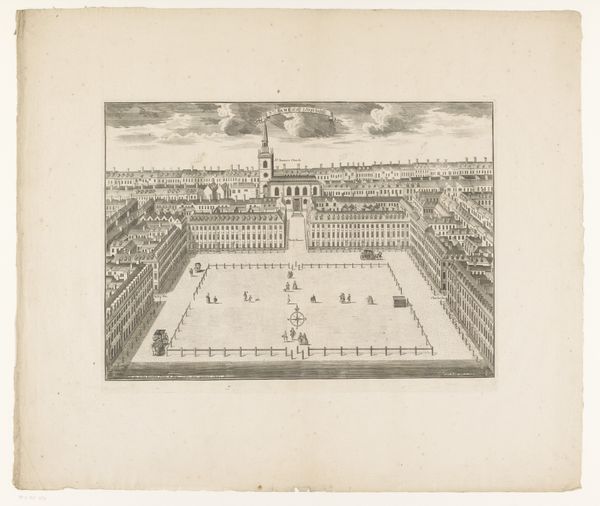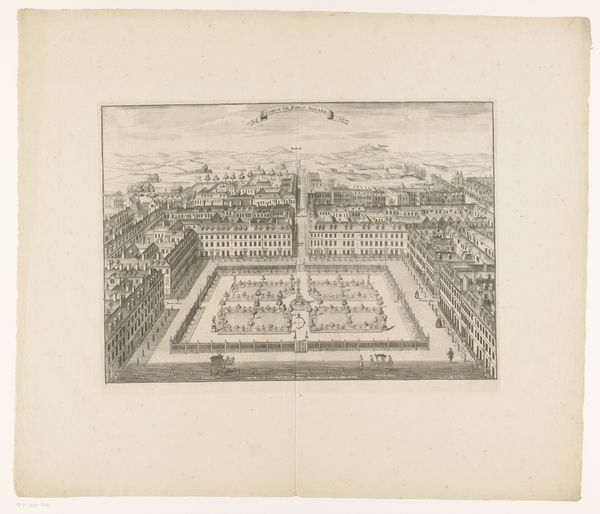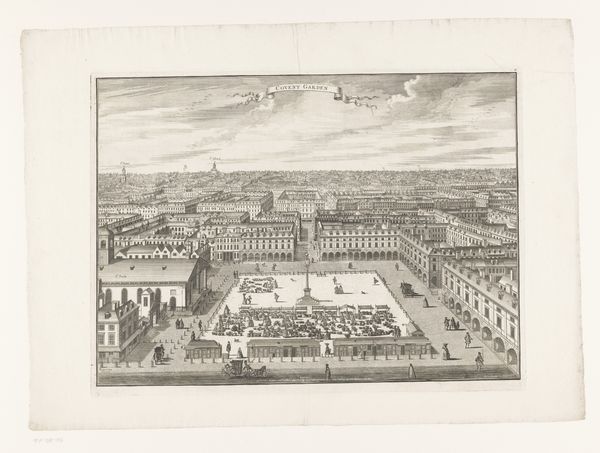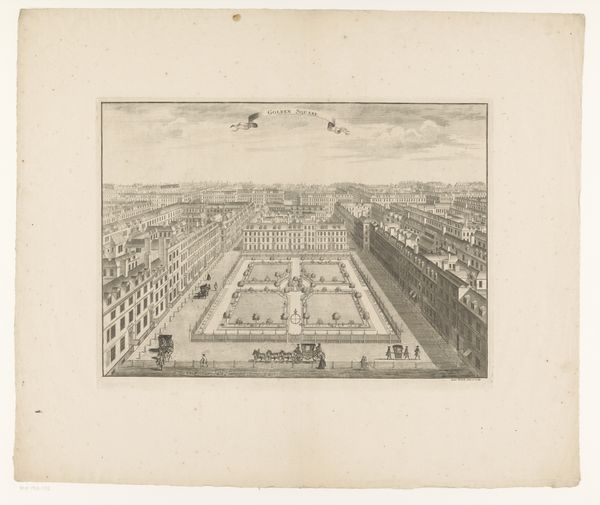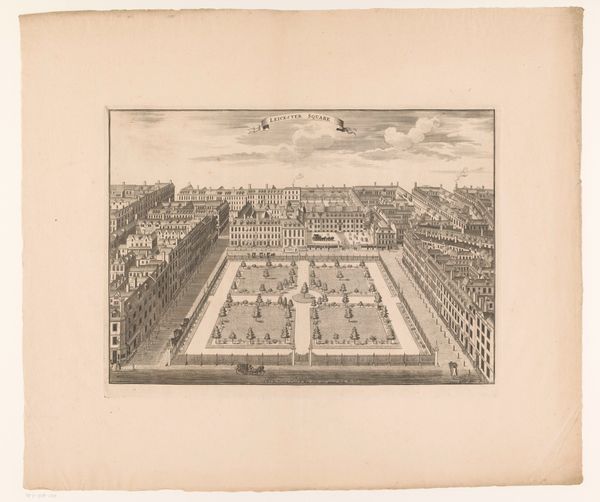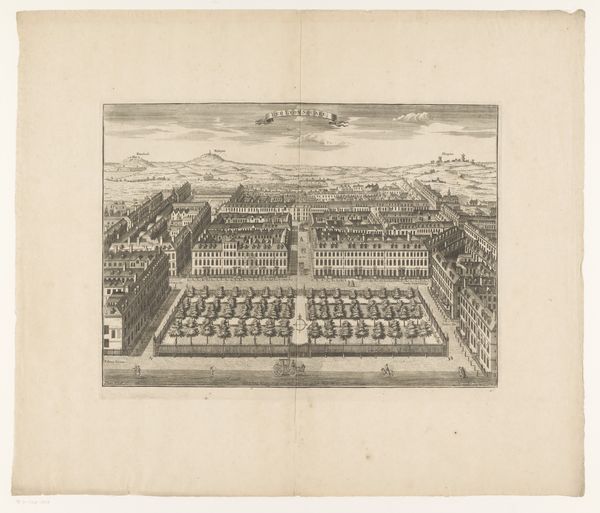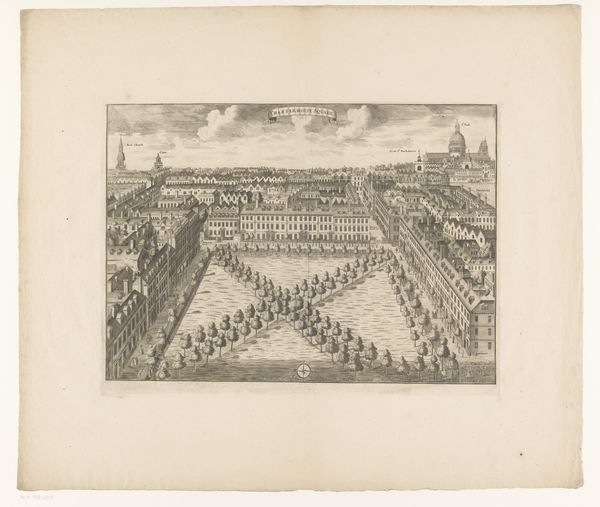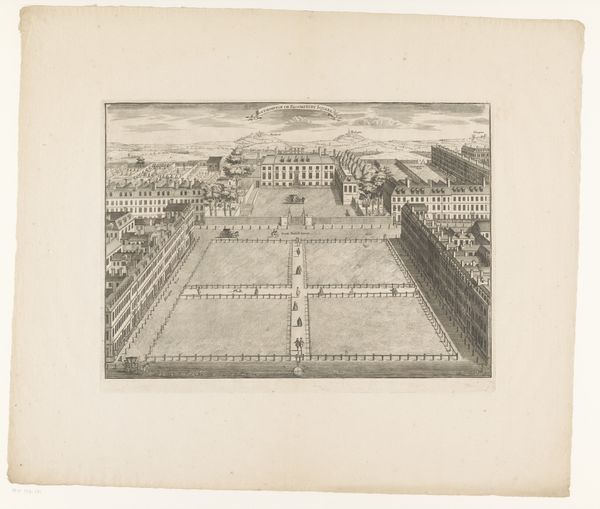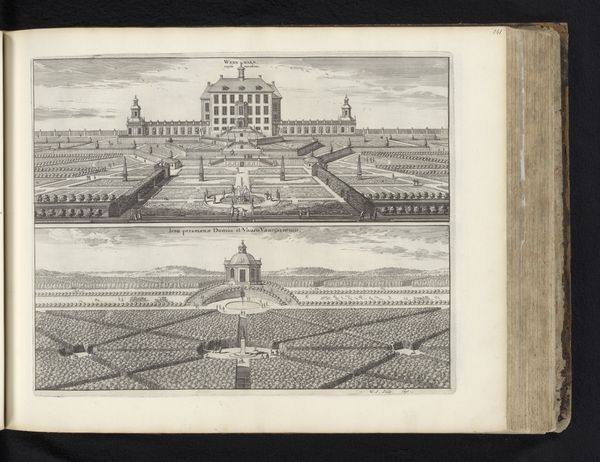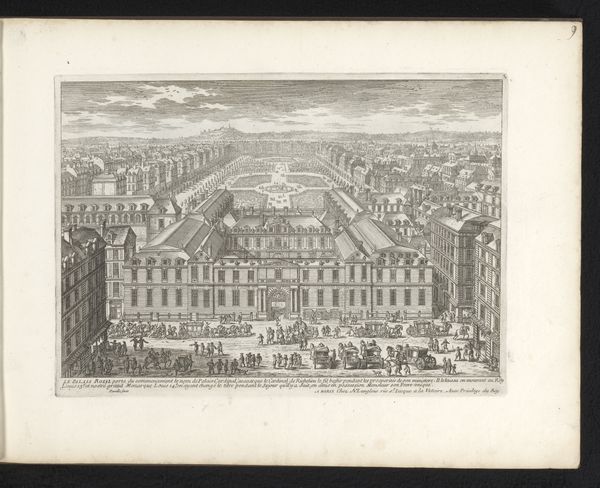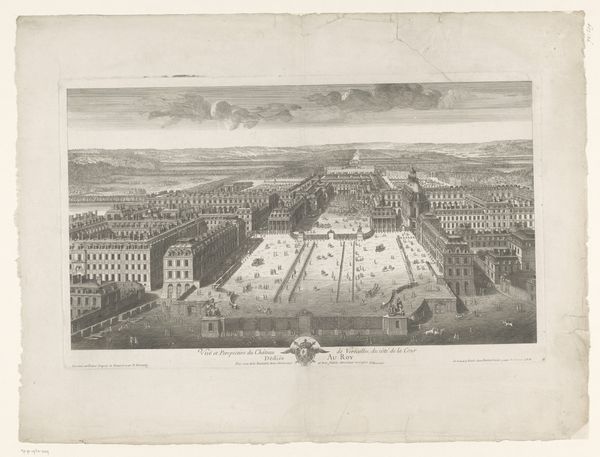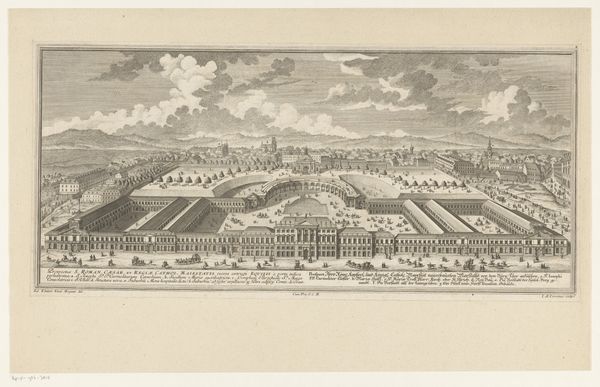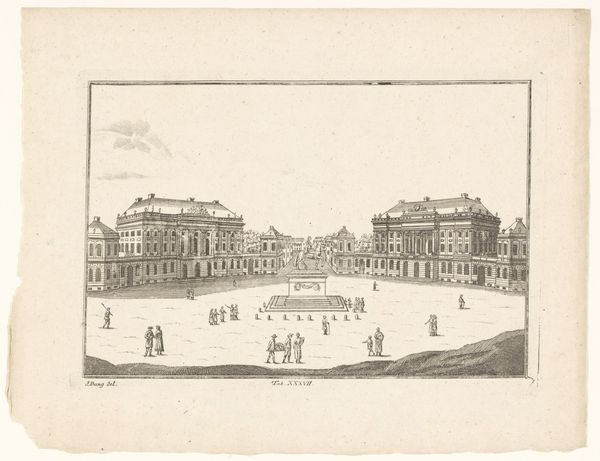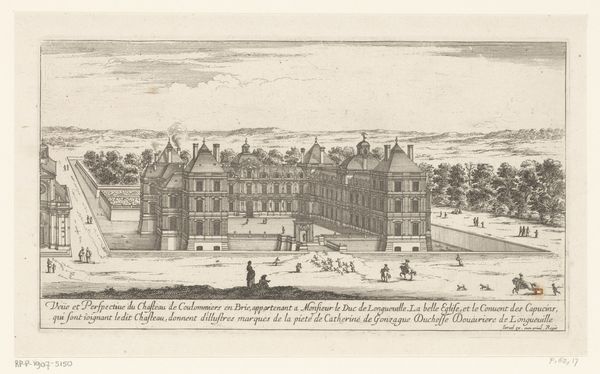
drawing, print, etching, paper, ink, engraving
#
drawing
#
baroque
#
ink paper printed
# print
#
etching
#
old engraving style
#
paper
#
ink
#
cityscape
#
engraving
Dimensions: height 343 mm, width 460 mm
Copyright: Rijks Museum: Open Domain
Curator: The level of detail is impressive, even from afar. The whole scene gives a sense of ordered grandeur, but also...distance. Editor: That's an apt description, and a feeling I think is quite intended. What we're looking at is "Gezicht op Hanover Square" by Sutton Nicholls, created sometime between 1720 and 1731. It’s currently held in the Rijksmuseum and is rendered as a print, through etching and engraving on paper with ink. It portrays Hanover Square, a fashionable London locale of the early 18th century. Curator: The aerial perspective really enforces this controlled sense of space, doesn't it? The square is neatly contained, almost like a stage set. What can you tell me about this urban development from a social history perspective? Editor: Hanover Square represented a conscious effort to shape not only the physical but also the social landscape. Developed by Richard Lumley, Earl of Scarbrough, it was intended to attract the aristocracy and gentry, subtly reinforcing class structures and spatial hierarchies. The architecture itself speaks to this. Notice the uniform facades – a visual expression of wealth and status, intended to project an image of uniformity and order. But if we look closer at, say, gender within this context, who truly had the space to occupy here? Curator: That's a compelling point. We're seeing this manicured space as seemingly available, when in reality access and participation would have been very heavily policed based on status, gender, even clothing! These spaces implicitly reinforced exclusion and marginalization, a stark reminder of power dynamics operating through the built environment. Editor: Precisely. While the print offers a picturesque view, it's crucial to read it against the grain. Who commissioned this piece? What purpose did it serve? Whose narrative is amplified, and whose is erased? Thinking of contemporary theories of urban planning, it’s interesting how some patterns persist in today’s cities, where access is dictated not by nobility but other economic determinants. Curator: Absolutely. The seemingly objective image reveals its underlying ideologies under scrutiny. This examination deepens the interaction with art, questioning assumptions. Editor: It makes you wonder about the unspoken rules embedded within architectural and societal structures. Hopefully viewers will go home seeing the world with new analytical frameworks.
Comments
No comments
Be the first to comment and join the conversation on the ultimate creative platform.
